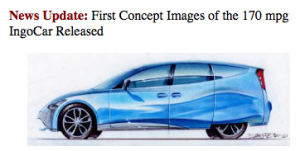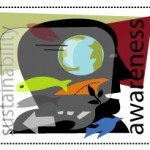It started when I turned 22.
I graduated from San Francisco State and moved to New York to experience big city lights and the skating rink in Central Park. Because I had worked in a library my junior and senior year, I found a job in less than a week with the General Motors Company in the public relations library. A big part of my job was to read the major newspapers and industry, trade, and business magazines for articles of interest to the company and to the executives on the floor above us. I clipped the most interesting ones and filed them in cabinets that took up an entire room and held a clipping collection going back to the 1930’s. My tweeting history officially started with my clipping job.
But then it was during the Vietnam war and GM made tanks, so I only stayed a short time and moved to Washington, D.C. for work with the National Association for Community Development. I did not have any formal clipping responsibilities, but it had become a habit so I often hand delivered articles to my colleagues. If we could find anyone from back then I’m sure they could be made to remember my clipping habit.
Now it’s the 1980’s and clipping gets easier, more technical, hipper. I’m sure you can see how email became my medium of choice as I continued throughout the years to “clip” and because I worked for high tech companies I was an early emailer, using a peer-to-peer system in 1981 to not only “email” but publish a magazine based on articles submitted electronically. I took my clipping habit to a new level.
In the early 1990’s I hailed the invention of the hyperlink and today rarely send out an email without at least two links as background. This brings me to my twitter habit and why I think I should be nominated as Ms. Twitter but not for having thousands of followers – I’m in the quality not quantity school – or for being one of the first persons to use it – I was fogged in by the limited text thing – or for having millions of tweets, but because I am the most an experienced twitterer and see it as a highly effective educational channel and an antidote to the over-commercialization of the Web.
However, I’m writing less in my blog because of my twittering. I’ve communicated more in 225 tweets then in a multitude of blog articles. I realize that in the blog world it’s all about me: my opinion and my experience mixed with knowledge gleaned from the whitepapers, research, articles and books I am always reading. With my tweets I’m bringing to my audience other voices, the voices of sustainability from our EarthSayers collection of over 400 video programs highlighting the voices of sustainability experts, business and civic leaders, teachers, and citizens from all walks of life. I saw Twitter could be an educational channel, a way to take earthsayers to followers who are interested in and can use the information in their work. I call attention to at least five videos each week. Instead of a book review, I’m tweeting the release of interesting book titles I receive related to sustainability such as the Salmon in the Trees: Life in Alaska’s Tongass Rain Forest by Ray Troll (Illustrator) and Amy Gulick (Photographer) or TRUE GREEN LIFE IN 100 EVERYDAY WAYS, a National Geographic Book.
it’s all about me: my opinion and my experience mixed with knowledge gleaned from the whitepapers, research, articles and books I am always reading. With my tweets I’m bringing to my audience other voices, the voices of sustainability from our EarthSayers collection of over 400 video programs highlighting the voices of sustainability experts, business and civic leaders, teachers, and citizens from all walks of life. I saw Twitter could be an educational channel, a way to take earthsayers to followers who are interested in and can use the information in their work. I call attention to at least five videos each week. Instead of a book review, I’m tweeting the release of interesting book titles I receive related to sustainability such as the Salmon in the Trees: Life in Alaska’s Tongass Rain Forest by Ray Troll (Illustrator) and Amy Gulick (Photographer) or TRUE GREEN LIFE IN 100 EVERYDAY WAYS, a National Geographic Book.
I get press releases because of this blog, but it makes more sense to put the news out over Twitter. I’m thinking of posting a new books roundup as part of my blog, but haven’t figured out how to manage the information in a way that makes this easy and timely.
Then there are the new products in categories ranging from cars to health and wellness products and services. Here’s one:
Elm Grove, WI — February 16th, 2010 — Valentin Technologies has given the public its first glimpse of its 170 MPG IngoCar, currently in the stage of development. This release of three teaser sketches shows the five-seat, four door sportwagen, brimming with innovation. Doesn’t it make you feel better that there is someone out there working on 170 MPG. It may be too late given the recent projections on climate change and peak oil, but it is something positive to talk about.
It may be too late given the recent projections on climate change and peak oil, but it is something positive to talk about.
And possibly the most interesting information for the marketing folks are the notices about research that ask important questions such as:
Do the corporations that benefit from environmentally-conscious purchasing and investment choices deserve their green halo?
Last week New Scientist reported on their study finding evidence suggesting that US consumers have little idea about companies’ relative environmental performance, across a wide sweep of businesses. They went on to note there were also some dramatic mismatches between performance and perceptions: Fresh Del Monte Produce, for instance, is one of the greenest companies around in the eyes of the U.S. public. But according to Trucost’s analysis, it has the biggest environmental impact ratio of all the companies in our sample.
Other key findings: (I am taking the time out from the Twitter theme because this is really important information)
· In general, consumers fail to recognize the large environmental impacts of food and beverage production
· Some companies are benefiting from underserved “green” reputations – and could be vulnerable to a consumer and investor backlash
· Others, such as The Coca Cola Company, are getting little public credit for some fairly impressive efforts to protect the environment
· Greater disclosure of companies’ environmental impacts will help investors and consumers to make choices that promote a green economy
· Green marketing can work – as our results for General Electric reveal
· In our sample, Whole Foods Market has the highest consumer “green” perception; Google and eBay the lowest actual environmental impact
 It’s hard to get in the twitter flow because it’s a lot like taking on a bird as a pet. Certain equipment is needed to make things comfortable for yourself and the bird, but most troublesome is the daily feeding requirement. Fortunately there are tools out there to manage and schedule tweets so it turns out to be less trouble than a bird because you don’t really have to do it every day. And, because people use searches and alerts to find those on Twitter by subject matter, in my case, sustainability, you add followers at a regular pace and amass people and organizations with mutual interests from around the world.
It’s hard to get in the twitter flow because it’s a lot like taking on a bird as a pet. Certain equipment is needed to make things comfortable for yourself and the bird, but most troublesome is the daily feeding requirement. Fortunately there are tools out there to manage and schedule tweets so it turns out to be less trouble than a bird because you don’t really have to do it every day. And, because people use searches and alerts to find those on Twitter by subject matter, in my case, sustainability, you add followers at a regular pace and amass people and organizations with mutual interests from around the world.
So, yes, I am a twitterer and have been for years. I highly recommend it to educate and inform like minded people. Next I’ll talk a little bit about why I want to go for the Ms. Google title and THAT goes back to 1975 when….
@earthsayer

 We are “pushing” out EarthSayers content to an audience who has expressed an interest in our cause. We experiment with the day and time of day we post and offer a wide range of experts, leaders, and citizens from all walks of life. It does seem to generate traffic to our site, meaning people do click through, but not in droves. What we are going to do next is emphasize the subject matter of the video, rather than the person presenting the information and see if it we increase click through numbers.
We are “pushing” out EarthSayers content to an audience who has expressed an interest in our cause. We experiment with the day and time of day we post and offer a wide range of experts, leaders, and citizens from all walks of life. It does seem to generate traffic to our site, meaning people do click through, but not in droves. What we are going to do next is emphasize the subject matter of the video, rather than the person presenting the information and see if it we increase click through numbers.



